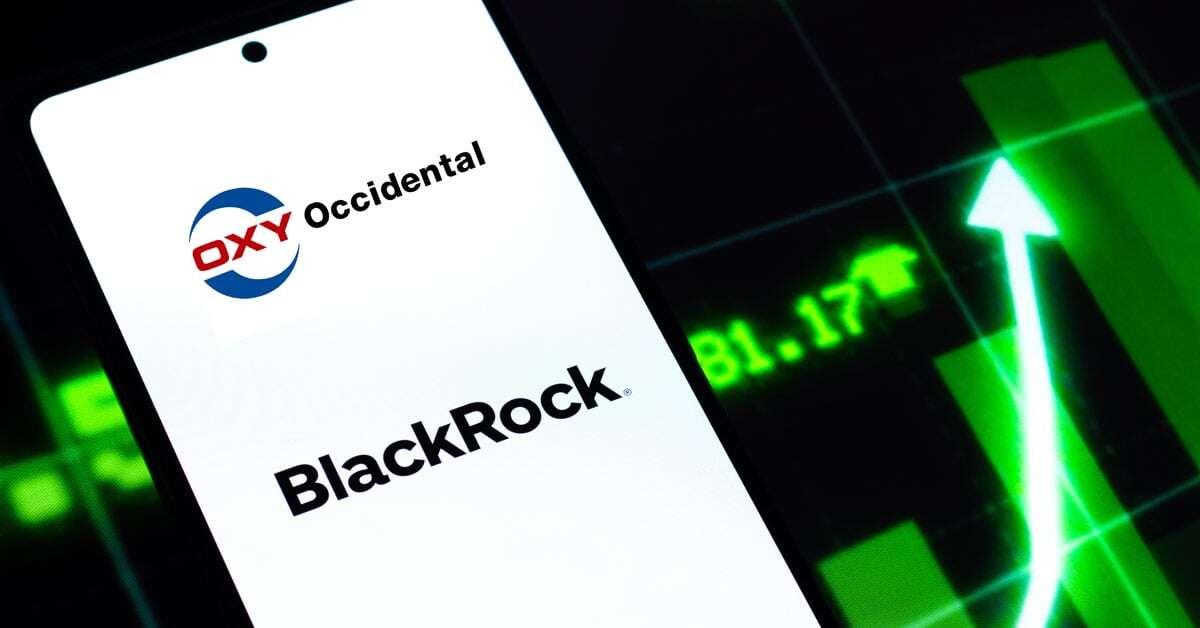3 min read
BlackRock Invests Massive $550 Million to Occidental DAC Carbon Plant
ResourceWise
:
Nov 20, 2023 12:00:00 AM

The world's largest money management firm, BlackRock, recently announced a considerable $550 million investment in Occidental Petroleum's direct air capture (DAC) facility. The investment will grow Occidental’s Texas location into the largest DAC operation in the world.
The name of the project is Stratos. According to a report from ResourceWise’s Carbon Mitigator, the plant will be capable of capturing 500,000 tons of CO2 per year once started in 2025.
Direct air capture, or DAC, is the blanket term for the process which removes and stores emitted CO2 directly from the air. Advocates see it as an excellent opportunity to complement the shift from fossil fuels into renewables. Alongside other carbon mitigation efforts, this technology can help organizations stay on track to meet climate targets within their value chains.
As BlackRock CEO Larry Fink reflected, the investment represents a big step in the realm of decarbonization. “If the world hopes to achieve decarbonization, energy companies are going to need to play a central role. They have the market knowledge and technical expertise that is going to be required on a global scale. We’re proud to work with bold innovators like [Occidental] to support their ambitious plans.”
Possible Problems of Implementing DAC
ResourceWise has already covered the topic of direct air capture on our blog (see link below). The costs and scale of successful carbon scrubbing has left many experts rightly skeptical of this emerging technology.
Read More: Removing Carbon Dioxide from the Air: Direct Air Capture
The problem with DAC comes down to a few important points:
- True Cost: The cost for DAC remains incredibly high. Current costs rest somewhere in the neighborhood of $1100-$1200 per ton to capture and process CO2. While investments such as BlackRock’s aim to help firms like Occidental reach a more economically feasible cost, we’re not there yet.
- Riding the Subsidy Wave: Part of what makes DAC so inviting to investment firms like BlackRock is how the subsidies are uncapped. This means the high operating and processing costs can be continually offset thanks to governmental support, particularly in the US. These credits will apply for the next 12 years, which gives investors like BlackRock plenty of time to turn around their ROI.
- Better Alternatives: Climate technologists and other experts also criticize DAC due to the aforementioned costs. Even if innovation drops the price of DAC to something like $500 per ton of CO2 or even lower, many critics note that other carbon capture methods could do much better for that price.
- High Risk of Greenwashing: Perhaps most alarmingly, DAC could suggest a “full-steam-ahead” on fossil fuel usage without any additional mitigating efforts. After all, why should operations have to make costly upgrades to renewables if they can simply remove their emissions from the air? This greenwashing could yield less overall carbon reduction or stand in the way of other developing solutions.
A Solution That’s Already Here
Our last post on the subject of DAC also outlined some deeper analysis from experts within the Advanced Bioeconomy Leadership Conference (ABLC) “Wolfpack.” For the most part, they remained highly uncertain of DAC’s future as a sustainable carbon-cutting option.
The main issue their analysis identified was the cost-benefit ratio. Even if advances in DAC technology lower its cost, a cheaper (and maybe better) alternative is likely to emerge even sooner. All the money directed toward DAC could be used for a better solution, then.
One example is a carbon extraction method from the sea. Oceans already contain over 100 times the carbon we have in the atmosphere. Since it’s already captured there, scientists would only need to worry about the extraction part of the equation. This idea has excellent potential in the race against the 1.5°C point-of-no-return temperature increase.
However, it’s the word “potential” that may be troubling in this context. These ideas could be years away from even the early stages of adoption and usage. To put it bluntly, we simply don’t have that sort of timeframe to await a potential that may never even come to fruition as a worthwhile alternative.
In the meantime, investors will continue to set their sights on DAC as one of many new emerging carbon capture solutions. It’s not the one-and-only solution, but no other options are either.
In the compromise of harm reduction theory, you can’t immediately dismiss one option just because it might not fully solve the problem, or it may increase other risks. You recognize that although it isn’t the best possible solution, it can still help to reach your objectives.
DAC can achieve the aim of removing carbon from the atmosphere. And with investments such as BlackRock’s, companies like Occidental will get better at it.
What that means is a rapidly developing carbon capture service that can be implemented immediately. And that is far better than waiting around until the next big thing makes its way to market.





